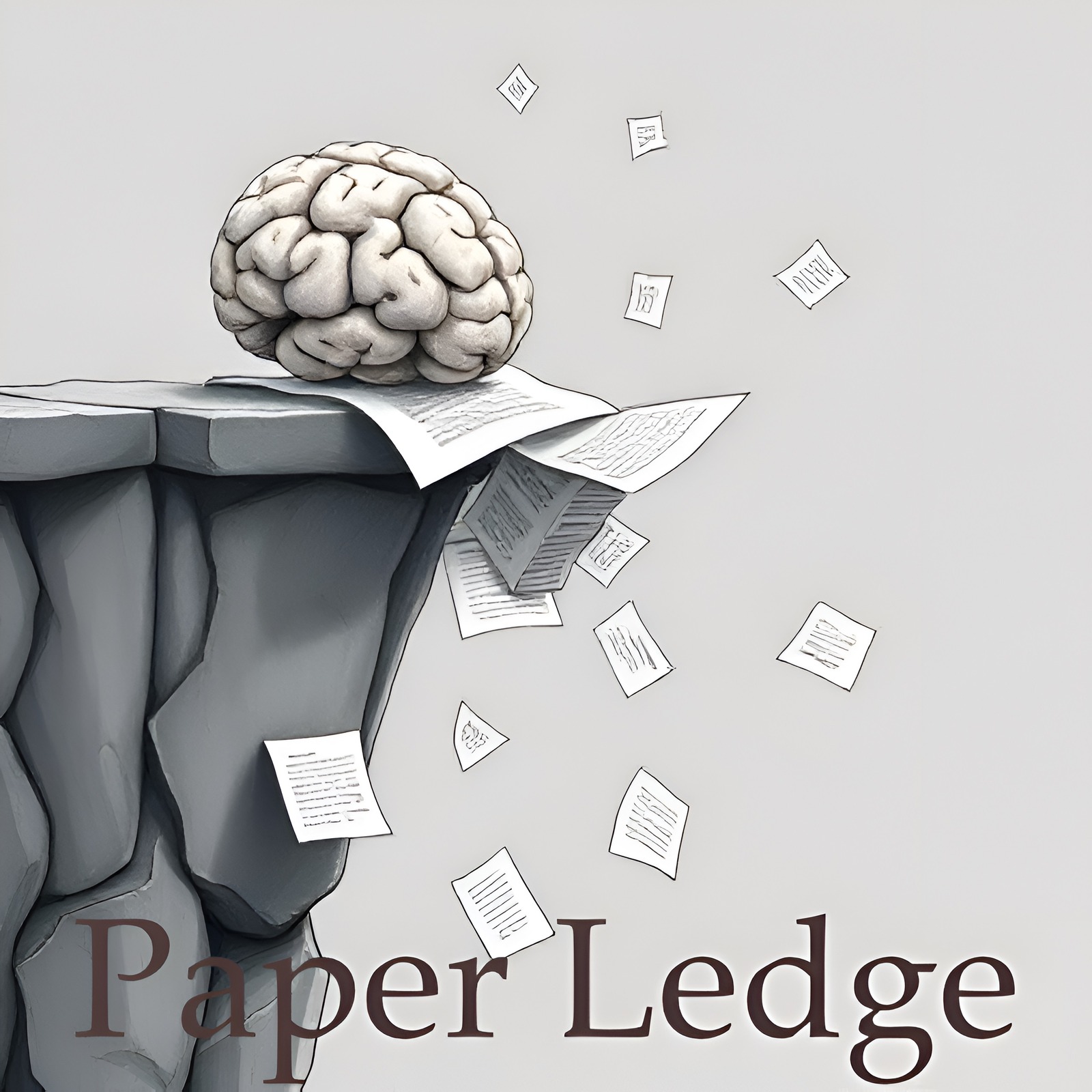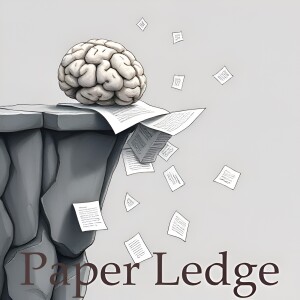PaperLedge

PaperLedge where research meets storytelling is a revolutionary podcast where cutting-edge research meets AI-powered storytelling. Hosted by the Ernis, whose blend of gentle reassurance, cosmic wonder, explanatory clarity, and enthusiastic charm makes complex research accessible to everyone. Each episode, Ernis transforms the latest academic papers into engaging, jargon-free audio experiences that deliver key insights in digestible formats. Whether you’re a researcher seeking interdisciplinary perspectives, a student supplementing your studies, or simply curious about scientific breakthroughs, PaperLedge has something for you.
Episodes
Episodes



Wednesday Oct 01, 2025
Wednesday Oct 01, 2025
Hey PaperLedge crew, Ernis here! Get ready to dive into some seriously cool tech that's blurring the lines between words and images. Today, we're unpacking a paper about how AI is getting really good at understanding what we want to see and then creating it.
Think about it like this: you're giving an artist very specific instructions – "Make a photo-realistic painting of a corgi wearing a tiny crown, sitting on a unicorn floating in space." Now, imagine an AI could actually do that, and do it well! That's essentially what this research is all about.
The researchers looked at something called Unified Multimodal Models (UMMs). Basically, these are systems that can understand and work with different types of information, like text and images, at the same time. The goal is to have these models create or edit images based on text prompts.
Now, here's where it gets interesting. The authors argue that in existing systems, the AI is trying to do too much at once. It's trying to understand your instructions, figure out what details are important (like the corgi's face!), and generate a high-quality image all at the same time. That's like asking a chef to simultaneously understand a complex recipe, source all the ingredients, and perfectly cook a multi-course meal – it’s tough!
So, they came up with a clever solution called Query-Kontext. Imagine it like this: you have a super smart assistant (the VLM - Vision Language Model) who's great at understanding instructions and knowing what elements should be in the image. This assistant creates a detailed "blueprint" – the "kontext" – outlining all the important stuff for the image: colors, objects, relationships etc.. Then, they hand that blueprint to a master artist (the Diffusion Model) who's amazing at rendering realistic and beautiful images.
"This design delegates the complex ability of multimodal generative reasoning to powerful VLM while reserving diffusion model's role for high-quality visual synthesis."
By separating the understanding and image creation parts, they can get better results. The assistant focuses on getting the details right, and the artist focuses on making it look fantastic.
Stage 1: Train the assistant to create good blueprints.
Stage 2: Teach the artist to use those blueprints to create detailed images.
Stage 3: Fine-tune the whole system to make the images even more realistic and follow instructions perfectly.
To make this work they needed a lot of data, so they built a special data pipeline with real images, computer-generated images, and publicly available images. This helps the AI learn from a wide range of scenarios, from basic image generation to complex tasks like editing an existing image or creating a picture with multiple subjects.
The results? The Query-Kontext system performed as well as, or even better than, existing methods, especially in tasks like creating images with specific details and editing images based on instructions. That's a big win!
So, why should you care? Well, if you're an artist, this could be a powerful tool for quickly bringing your ideas to life. If you're a marketer, you could generate custom images for your campaigns in seconds. If you're just curious about the future of AI, this shows how far we've come in teaching machines to understand and create the world around us.
But this also raises some interesting questions:
If AI can create images on demand, what does that mean for the role of human artists and photographers?
How do we ensure that these systems are used responsibly and aren't used to create misleading or harmful content?
Could this technology eventually lead to personalized virtual realities based on our individual desires and imaginations?
Food for thought, right? That's all for this episode of PaperLedge. Until next time, keep learning!Credit to Paper authors: Yuxin Song, Wenkai Dong, Shizun Wang, Qi Zhang, Song Xue, Tao Yuan, Hu Yang, Haocheng Feng, Hang Zhou, Xinyan Xiao, Jingdong Wang



Wednesday Oct 01, 2025
Wednesday Oct 01, 2025
Hey PaperLedge crew, Ernis here, ready to dive into some seriously cool image generation magic! Today we're unraveling a new technique called Stitch, and trust me, it's a game-changer for AI image creation.
So, you know how those AI image generators are getting ridiculously good? You can type in "a cat wearing a hat," and boom, instant feline fashionista. But what if you want something more specific, like "a cat wearing a hat above a dog eating a bone"? That's where things get tricky. Getting the AI to understand and perfectly execute those spatial relationships - the "above," "below," "to the left of" - has been a real challenge.
Think of it like this: imagine you're trying to describe a scene to a friend over the phone. You might say, "There's a red car next to a tall building." Easy enough. But what if you want to specify, "The red car is slightly in front of the tall building, but to the right of the entrance"? Suddenly, it's a lot harder to visualize accurately. That's the problem AI image generators face, but on a much more complex scale.
Previous attempts to fix this involved adding extra controls to the AI, kind of like giving it a GPS for objects. But as the AI models got fancier and produced higher-quality images, these old control methods stopped working. They just weren't compatible with the new tech.
That's where Stitch comes in. It's a brilliant, training-free technique that lets us inject spatial control into these advanced image generators. It's like giving the AI a precise set of instructions without having to retrain the entire thing!
Here's the gist: Stitch uses automatically generated bounding boxes – think of them as invisible boxes drawn around where you want each object to appear in the final image. The AI then generates each object within its designated box, and then "stitches" them all together seamlessly. It's like creating a collage, but the AI does all the cutting and pasting!
The really clever part is how it does this "cutting" mid-generation. The researchers discovered that certain parts of the AI's "brain" – specific attention heads – already contain the information needed to isolate and extract individual objects before the entire image is even finished. This is pure genius!
To prove how well Stitch works, the researchers created a new benchmark called PosEval. Think of it as an obstacle course for AI image generators, designed to test their ability to handle complex spatial relationships. It's way more challenging than existing tests, revealing that even the best models still have a lot to learn when it comes to position-based generation.
Imagine tasks like accurately placing multiple objects in specific arrangements, or understanding relative sizes and distances. PosEval puts these AIs through their paces!
The results are stunning. Stitch significantly improves the spatial accuracy of top models like Qwen-Image, FLUX, and SD3.5. In some cases, it boosts their performance by over 200%! Plus, it allows Qwen-Image to achieve state-of-the-art results. And the best part? It does all of this without needing any additional training.
"Stitch consistently enhances base models, even improving FLUX by 218% on GenEval's Position task..."
So, why does this matter? Well, for artists and designers, Stitch offers a new level of precision and control over AI image generation. For businesses, it opens up possibilities for creating highly customized marketing materials and product visualizations. And for researchers, it provides a powerful tool for exploring the inner workings of these complex AI models.
Imagine being able to design a room layout with perfect precision, or create a photorealistic rendering of a product with specific elements placed exactly where you want them. Stitch makes these possibilities a reality.
Here are some questions that pop into my head:
How might Stitch be used to create more personalized and engaging educational content?
Could this technique be adapted to other areas of AI, such as video generation or 3D modeling?
What are the ethical implications of having such precise control over AI image generation, and how can we ensure it's used responsibly?
You can find the code and more details on Github (https://github.com/ExplainableML/Stitch). Definitely worth checking out! That's all for today's episode. Keep exploring, keep learning, and I'll catch you next time on PaperLedge!Credit to Paper authors: Jessica Bader, Mateusz Pach, Maria A. Bravo, Serge Belongie, Zeynep Akata



Wednesday Oct 01, 2025
Wednesday Oct 01, 2025
Hey PaperLedge learning crew, Ernis here, ready to dive into some cutting-edge AI! Today, we're tackling a paper about video anomaly detection - basically, teaching computers to spot weird stuff happening in videos, all on their own!
Now, you might be thinking, "Why is that important?" Well, imagine surveillance cameras in airports, factories, or even self-driving cars. We want them to automatically notice things like someone leaving a suspicious package, a machine malfunctioning, or a pedestrian suddenly stepping into the road. That's where video anomaly detection comes in.
The problem is, current systems are often clunky. They usually need to be trained on specific types of anomalies in specific locations. Think of it like teaching a dog to fetch a ball, but only a red ball, and only in your backyard. If you take him to the park with a blue ball, he's clueless! This means a lot of manual work and limited usefulness when faced with something new.
This paper introduces something really exciting: PANDA, which stands for... well, it's a bit of a mouthful, but think of it as an agentic AI engineer. Essentially, it's an AI system designed to automatically detect anomalies in any video, in any scene, without any prior training or human tweaking. It's like having a super-smart security guard that can instantly adapt to any situation!
So, how does PANDA pull off this magic trick?
Self-Adaptive Scene-Aware Strategy Planning: PANDA can figure out the context of a video. It’s like walking into a room and immediately understanding what's going on. It uses something called a "self-adaptive scene-aware RAG mechanism," which is a fancy way of saying it quickly grabs relevant information to plan its anomaly-detecting strategy.
Goal-Driven Heuristic Reasoning: PANDA doesn’t just blindly look for anything out of the ordinary. It has a goal (detect anomalies!) and uses smart "rules of thumb" to reason about what's happening. Imagine a detective using clues to solve a case – that's PANDA reasoning!
Tool-Augmented Self-Reflection: This is where things get really cool. PANDA doesn’t just make decisions and move on. It has a suite of "tools" (like different image analysis techniques) and it reflects on its performance, constantly learning and improving. It's like a student reviewing their homework and figuring out how to do better next time.
Self-Improving Chain-of-Memory: PANDA remembers past experiences and uses them to make better decisions in the future. It's like learning from your mistakes – but at lightning speed!
The researchers put PANDA through its paces in all sorts of tricky situations – different scenes, unusual anomalies, you name it. And guess what? It outperformed existing methods without needing any training data or human help! That's a huge step towards creating truly general-purpose AI systems that can adapt to the real world.
"PANDA achieves state-of-the-art performance in multi-scenario, open-set, and complex scenario settings without training and manual involvement, validating its generalizable and robust anomaly detection capability."
So, what does this all mean for us?
For security professionals: PANDA could revolutionize surveillance systems, making them far more effective and efficient.
For manufacturers: It could help detect equipment failures before they cause major problems, saving time and money.
For everyday folks: Think safer streets, more reliable public transportation, and even better self-driving cars.
This research opens up some fascinating questions:
Could PANDA be adapted to detect anomalies in other types of data, like financial transactions or medical records?
What are the ethical implications of deploying AI systems that can automatically detect anomalies? How do we ensure they're used responsibly?
As AI models like PANDA become more sophisticated, how do we ensure transparency and accountability in their decision-making processes?
That's PANDA in a nutshell, learning crew! A big leap towards truly intelligent and adaptable AI. You can check out the code yourself – the link is in the show notes. Until next time, keep those learning gears turning!Credit to Paper authors: Zhiwei Yang, Chen Gao, Mike Zheng Shou



Wednesday Oct 01, 2025
Wednesday Oct 01, 2025
Alright Learning Crew, Ernis here, ready to dive into another fascinating paper that's going to blow your mind (in a good way, I promise!). Today, we're talking about something called KG-R1 – and before your eyes glaze over, trust me, it’s way cooler than the name suggests.
So, you know how Large Language Models, or LLMs, like the ones that power your favorite chatbots, are super smart but sometimes… well, they make stuff up? It’s called “hallucinating” – like when your GPS confidently directs you into a lake. Not ideal!
This paper tackles that problem head-on using something called Knowledge Graph Retrieval-Augmented Generation, or KG-RAG. Think of it like this: LLMs are the creative writers, but Knowledge Graphs (KGs) are the fact-checkers and research librarians. KGs are essentially databases that store information in a very organized, structured way – like a giant family tree for everything.
The basic KG-RAG idea is, before the LLM answers your question, it consults the KG to get accurate information. This helps reduce those pesky hallucinations and gives you a traceable line of reasoning – you can see why the LLM gave you that answer.
Now, here's where it gets interesting. Many existing KG-RAG systems are complicated, using multiple LLMs chained together – one to plan, one to reason, one to respond. It's like having a team of chefs where each chef only does one step in the recipe. This is expensive (more computing power!) and ties everything to a specific KG.
That's where KG-R1 comes in. The researchers behind this paper wanted to create a simpler, more efficient, and more adaptable KG-RAG system. They've built a system that is like a single, highly skilled chef that can handle the entire recipe, and learn to do it even better with practice.
They use something called Reinforcement Learning (RL) to train a single "agent" – basically, a single AI brain – to interact directly with the Knowledge Graph. Think of it like teaching a dog to fetch. The dog (the agent) explores the yard (the KG), looking for the right ball (the information needed to answer the question), and gets rewarded when it brings back the correct one. Over time, the dog learns the best way to find the right ball.
This agent learns to retrieve information from the KG at each step of its reasoning process, incorporating that information into its answer. And because it's trained using RL, it gets better and better at it!
The results are pretty impressive. The researchers found that KG-R1, using a relatively small LLM, outperformed more complex, multi-module KG-RAG systems that used much larger LLMs. That means more accuracy with less computing power!
Even better, KG-R1 is "plug and play." After being trained, it can handle new Knowledge Graphs without needing to be retrained. It’s like learning to ride a bike – once you’ve got the balance, you can ride any bike!
So, why should you care?
For developers and AI enthusiasts: KG-R1 offers a more efficient and transferable approach to building KG-RAG systems. It's a blueprint for creating more reliable and adaptable AI.
For businesses: Imagine using this technology to create chatbots that provide accurate, verifiable information to your customers, reducing the risk of spreading misinformation.
For everyone: KG-R1 is a step towards building AI systems that are less prone to "hallucinations" and more transparent in their reasoning. It’s about creating AI you can trust.
So, here are a couple of things that jumped out at me that we can ponder:
Could this approach be adapted to other types of data beyond Knowledge Graphs? Imagine using a similar RL-based agent to navigate and learn from other structured datasets.
How might we further improve the transparency of KG-R1's reasoning process? While it exposes reasoning traces, is there a way to make it even easier for users to understand why it arrived at a particular answer?
This is a promising direction in the world of AI, and I'm excited to see what the future holds for KG-R1 and similar technologies. The code is available on Github - link is in the show notes. Until next time Learning Crew!Credit to Paper authors: Jinyeop Song, Song Wang, Julian Shun, Yada Zhu



Wednesday Oct 01, 2025
Wednesday Oct 01, 2025
Hey PaperLedge crew, Ernis here, ready to dive into some seriously cool tech! Today, we're talking about something that feels like pure magic: editing images using just words.
Think about it: you have a picture, and instead of fiddling with sliders and complicated software, you simply tell the computer what to change. "Make the sky more dramatic," or "Add a cat wearing sunglasses." Sounds like science fiction, right?
Well, it’s becoming reality! There are some big, closed-source companies, like GPT-Image-1 and Google-Nano-Banana (not the actual names, but you get the idea 😉), that are doing amazing things with this. But the open-source community, the folks who believe in sharing knowledge and building together, are playing catch-up.
So, what’s holding them back? It turns out, it all boils down to something called a reward model. Let me explain with an analogy:
Imagine you're training a dog to fetch. You need to reward the dog when it does something right. If you just yell "fetch" without giving any feedback, the dog won't learn very quickly. A reward model is like that positive feedback for image editing AI. It tells the AI, "Yep, that's a good edit," or "Nope, try again."
The problem is, creating a reliable reward model requires tons of high-quality training data. And that's where this paper comes in!
These researchers have built something called \mname (we'll call it "EditJudge" for now, since the name is still under wraps). EditJudge is a new reward model specifically designed to judge how well an AI edits images based on text instructions.
What makes EditJudge special? They trained it using a massive dataset of over 200,000 examples where humans compared different image edits and picked the one they liked best. This dataset was meticulously created by trained experts who followed a strict set of rules. Think of it as a highly curated art competition where the judges are super picky and consistent.
The results? EditJudge is really good at understanding what humans want. The paper shows that EditJudge outperforms many other AI systems, even those using powerful language models, on various tests like GenAI-Bench and AURORA-Bench, as well as a new one they created called \benchname.
This meticulous annotation process is key. It ensures that the reward model learns to align with human aesthetic preferences and nuanced understanding of instructions.
But here's where it gets even cooler. The researchers used EditJudge to improve an existing, but somewhat noisy, dataset called ShareGPT-4o-Image. Think of ShareGPT-4o-Image as a huge pile of LEGO bricks, but some of the bricks are broken or don't quite fit. EditJudge helped them pick out the good bricks and build something amazing.
They then trained a new image editing model, Step1X-Edit, using only the high-quality data selected by EditJudge. And guess what? It performed significantly better than if they had trained it on the entire, messy dataset!
This proves that EditJudge can be used to create better training data, which leads to better image editing AI. It's like having a master chef teach you how to cook using only the freshest, highest-quality ingredients.
Ultimately, the researchers are releasing EditJudge and its training dataset to the open-source community. This means anyone can use it to build better image editing tools. It's a huge win for collaboration and innovation!
So, why does this matter? Well:
For developers, this provides a powerful tool to build more accurate and user-friendly image editing AI.
For artists and designers, this could revolutionize the way they create and iterate on their work. Imagine quickly generating dozens of variations of an image based on simple text prompts!
For the average person, this makes image editing more accessible and intuitive. No more struggling with complex software!
And even more exciting, this research suggests EditJudge could be used for even more advanced techniques, like reinforcement learning, to further improve image editing AI. It's a whole new frontier!
Here are a few questions that come to mind:
How might we use EditJudge to personalize image editing AI to individual preferences?
What are the ethical considerations of making it so easy to manipulate images?
Could these techniques be applied to other creative domains, like music or video editing?
That's all for this episode! I hope you found this as fascinating as I did. Keep learning, keep exploring, and I'll catch you next time on PaperLedge!Credit to Paper authors: Keming Wu, Sicong Jiang, Max Ku, Ping Nie, Minghao Liu, Wenhu Chen



Tuesday Sep 30, 2025
Tuesday Sep 30, 2025
Alright learning crew, Ernis here, ready to dive into another mind-bending paper! Today, we're tackling something that's right at the intersection of AI and knowledge – it's all about making Large Language Models, you know, those super smart chatbots, even smarter.
See, these LLMs are amazing at processing language and even doing some pretty complex reasoning. But, and it's a big but, they're often limited by what they already know. Think of it like this: they're like a brilliant student with a really good textbook, but what if the textbook is missing some key chapters, or the information is a bit outdated?
That's where Retrieval-Augmented Generation, or RAG for short, comes in. RAG is like giving that student access to the entire library! It lets the LLM pull in external knowledge to answer questions and solve problems. But the current RAG systems can be a bit clumsy, especially when dealing with complex, interconnected knowledge. Imagine trying to build a house with LEGOs but all the bricks are scattered randomly in a giant bin. That's kind of what existing RAG systems are dealing with when it comes to knowledge.
Now, what if we could organize all that knowledge into a neat, structured format? That's where graphs come into play. Think of a graph as a map showing how different pieces of information are related. For example, a graph could show how a disease is related to its symptoms, its causes, and its treatments. This allows LLMs to “see” the bigger picture.
But here's the rub: LLMs are designed to work with text, not graphs. It's like trying to play a vinyl record on a CD player – they just don't speak the same language. So, researchers have been trying to build systems, called GraphRAG, that bridge this gap. The problem is that these systems often rely on complicated, custom-built graphs and inefficient methods, making them hard to scale up and use in different situations.
"Existing RAGs struggle with knowledge-intensive tasks due to fragmented information and weak modeling of knowledge structure."
This brings us to the paper we're discussing today! These researchers introduce G-reasoner, a new system that aims to solve these problems. The core idea is to create a unified framework that can understand and reason over knowledge organized in graphs.
The first key ingredient is QuadGraph, which is like a standardized blueprint for building knowledge graphs. It's a four-layer system that organizes information from different sources into a common format. Imagine it as converting different currencies into a single, universal currency, making it easier to compare and use.
The second ingredient is a Graph Foundation Model (GFM). This is a special AI model, trained on tons of graph data, that can understand both the structure of the graph and the meaning of the text within it. It's like teaching the LLM to "read" the map and understand what it represents.
And finally, they integrated the GFM with an LLM to enhance reasoning. By using some clever engineering tricks to make it scalable and efficient, they were able to show that G-reasoner significantly outperforms other systems on various knowledge-intensive tasks.
So, why should you care? Well, if you're a:
Student or Researcher: This research could revolutionize how we build AI systems that can learn and reason from complex knowledge, opening up new possibilities in fields like medicine, science, and engineering.
Developer or Engineer: G-reasoner provides a more efficient and scalable way to integrate knowledge graphs into LLMs, which could lead to smarter chatbots, better search engines, and more powerful AI applications.
Anyone interested in AI: This research highlights the importance of structuring knowledge and finding new ways to connect AI models with the real world.
Here are some things that popped into my head when reading this paper:
Could this type of graph-reasoning be applied to areas outside of traditional knowledge domains, like understanding social networks or financial markets?
How do we ensure that the knowledge graphs used by G-reasoner are accurate and unbiased, and how do we prevent the system from amplifying existing biases?
What are the ethical implications of building AI systems that can reason over complex knowledge, and how can we ensure that these systems are used responsibly?
That's it for this episode, learning crew! Hope that sparked some curiosity and gave you a better understanding of this exciting research. Until next time, keep learning and keep questioning!Credit to Paper authors: Linhao Luo, Zicheng Zhao, Junnan Liu, Zhangchi Qiu, Junnan Dong, Serge Panev, Chen Gong, Thuy-Trang Vu, Gholamreza Haffari, Dinh Phung, Alan Wee-Chung Liew, Shirui Pan



Tuesday Sep 30, 2025
Tuesday Sep 30, 2025
Hey PaperLedge crew, Ernis here, ready to dive into some cutting-edge medical AI research! Today, we're unpacking a paper about a new kind of AI model for healthcare called EVLF-FM. Now, I know that sounds like alphabet soup, but trust me, the implications are super exciting!
So, the challenge in medical AI right now is that most systems are really good at one specific thing, like reading X-rays or analyzing skin lesions. They're like super-specialized doctors, but they can't connect the dots between different areas. Plus, a lot of these models are like black boxes – they give you an answer, but you have no idea why they arrived at that conclusion. That makes it tough for doctors to trust them, right?
That's where EVLF-FM comes in! Think of it as a generalist doctor who can look at all sorts of medical images – from dermatology photos to lung scans – and give you not just a diagnosis, but also show you why it made that diagnosis.
The researchers trained this model on a massive amount of data: over 1.3 million images from 23 different datasets! We're talking about pictures of skin conditions, liver issues, eye problems, and so much more. Then they tested it on even more images to see how well it performed in the real world.
Here's the cool part: EVLF-FM isn't just good at identifying diseases. It's also great at answering questions about the images. For example, you could show it an X-ray and ask, "Is there a tumor in this lung?", and it won't just say "yes" or "no." It'll actually highlight the area of the image that it's using to make that determination. That's what they call "visual grounding" - showing the evidence behind the answer!
"EVLF-FM is an early multi-disease VLM model with explainability and reasoning capabilities that could advance adoption of and trust in foundation models for real-world clinical deployment."
The results were impressive! In internal tests, EVLF-FM outperformed other AI models in terms of accuracy and what they call "F1-score" (a measure of how well it balances precision and recall). It also aced the visual grounding tests, accurately pinpointing the areas of interest in the images. And even when tested on completely new datasets, it held its own!
So, how did they achieve this? Well, they used a clever training strategy that combines "supervised learning" (where the model is shown examples with correct answers) with "visual reinforcement learning" (where the model is rewarded for making decisions that align with visual evidence). It's like teaching a child by giving them both instructions and positive feedback when they do well.
Why does this matter?
For doctors, EVLF-FM could be a valuable tool for diagnosis and treatment planning, helping them to make more informed decisions. The explainability aspect can build trust and make AI a more reliable partner in clinical practice.
For patients, this could lead to faster and more accurate diagnoses, potentially improving health outcomes. Imagine having an AI assistant that can help your doctor understand your condition more thoroughly!
For AI researchers, EVLF-FM represents a significant step forward in the development of more robust and trustworthy medical AI systems. It shows that it's possible to build models that are both accurate and explainable.
This research is a glimpse into a future where AI can truly assist doctors in providing better care. It's not about replacing doctors, but about empowering them with powerful new tools that can help them make more informed decisions.
Here are a couple of things that make me wonder:
How can we ensure that models like EVLF-FM are used ethically and responsibly, especially in situations where the AI's diagnosis might conflict with a doctor's opinion?
What are the next steps in developing these kinds of multimodal AI models? Could we eventually see AI systems that can integrate even more types of data, like patient history, genetic information, and lifestyle factors, to provide a truly holistic view of a patient's health?
Alright crew, that's EVLF-FM in a nutshell. Hopefully, that gave you some food for thought. Until next time, keep learning!Credit to Paper authors: Yang Bai, Haoran Cheng, Yang Zhou, Jun Zhou, Arun Thirunavukarasu, Yuhe Ke, Jie Yao, Kanae Fukutsu, Chrystie Wan Ning Quek, Ashley Hong, Laura Gutierrez, Zhen Ling Teo, Darren Shu Jeng Ting, Brian T. Soetikno, Christopher S. Nielsen, Tobias Elze, Zengxiang Li, Linh Le Dinh, Hiok Hong Chan, Victor Koh, Marcus Tan, Kelvin Z. Li, Leonard Yip, Ching Yu Cheng, Yih Chung Tham, Gavin Siew Wei Tan, Leopold Schmetterer, Marcus Ang, Rahat Hussain, Jod Mehta, Tin Aung, Lionel Tim-Ee Cheng, Tran Nguyen Tuan Anh, Chee Leong Cheng, Tien Yin Wong, Nan Liu, Iain Beehuat Tan, Soon Thye Lim, Eyal Klang, Tony Kiat Hon Lim, Rick Siow Mong Goh, Yong Liu, Daniel Shu Wei Ting



Tuesday Sep 30, 2025
Tuesday Sep 30, 2025
Hey PaperLedge crew, Ernis here, ready to dive into another fascinating piece of research! Today, we're talking about how computers are learning to "see" and understand the 3D world, just like we do.
Now, you know how those fancy AI models, called Large Language Models, are getting really good at understanding text and images in 2D? Think about it – they can caption photos, answer questions about pictures… it's pretty impressive. But what about understanding 3D spaces? Like, if you showed a robot a video of your living room, could it understand where the couch is, how far away the TV is, and answer questions about the layout?
That's the challenge! And the paper we're looking at today tackles this head-on. It's about a new system called Vid-LLM – think of it as a video-powered brain for understanding 3D scenes. What makes Vid-LLM special is that it works directly with videos, without needing complicated 3D data. This is a big deal because getting that 3D data is often expensive and time-consuming. Imagine trying to scan every room you want the robot to understand – that's just not practical!
So, how does Vid-LLM do it? Well, the researchers cleverly use the video itself to figure out the 3D geometry of the scene. They've built in what they call "geometric priors" – kind of like giving the system some basic assumptions about how the world works. For example, knowing that floors are usually flat and walls are often perpendicular.
Think of it like this: when you walk into a room, you don't need to measure everything to understand the layout. You use your experience and intuition to quickly grasp the 3D structure. Vid-LLM tries to do something similar.
To get this geometric understanding into the model, they use something called a Cross-Task Adapter (CTA). Imagine it as a translator that helps the AI connect the 3D information with its understanding of language and images. This CTA ensures that the geometric information aligns with the other types of information the model is processing.
But here’s the kicker: the system also needs to know the actual scale of things. A virtual model of your living room is useless if the AI thinks your coffee table is the size of a postage stamp! To solve this, they use a Metric Depth Model. This model recovers the real-world size and distances in the scene, making sure everything is geometrically accurate.
"Vid-LLM directly processes video inputs without requiring external 3D data, making it practical for real-world deployment."
Finally, they use a clever training technique to get the model to learn quickly and accurately. It's a two-stage process that helps the model converge to the right answer and stay on track. It's like teaching a student by first giving them a general overview and then focusing on the specific details.
So, why does all this matter? Well, imagine the possibilities!
For robotics, this could lead to robots that can navigate and interact with the world more intelligently. Think of a robot that can understand your instructions about picking up an object, even if you only show it a video of the object in your messy room.
For augmented reality (AR), it could create more immersive and realistic experiences. Imagine AR apps that can accurately overlay virtual objects onto your real-world environment, even if the environment hasn't been pre-scanned.
For accessibility, it could help visually impaired people understand their surroundings better. Think of a smart assistant that can describe the layout of a room based on a simple video feed.
The researchers tested Vid-LLM on a variety of tasks, like answering questions about 3D scenes, describing the contents of a 3D space in detail, and visually grounding objects in 3D. And guess what? It performed really well! This shows that Vid-LLM has strong multi-task capabilities and can effectively understand and reason about 3D scenes.
So, here are a few things I'm wondering about as we head into our discussion:
How well does Vid-LLM handle dynamic environments? What happens if things are moving around in the video?
Could this technology be adapted to understand 3D spaces from multiple videos taken at different times?
What are the ethical implications of having AI systems that can so accurately understand and interpret our physical environments?
Excited to hear your thoughts, PaperLedge crew! Let's dive in!Credit to Paper authors: Haijier Chen, Bo Xu, Shoujian Zhang, Haoze Liu, Jiaxuan Lin, Jingrong Wang







